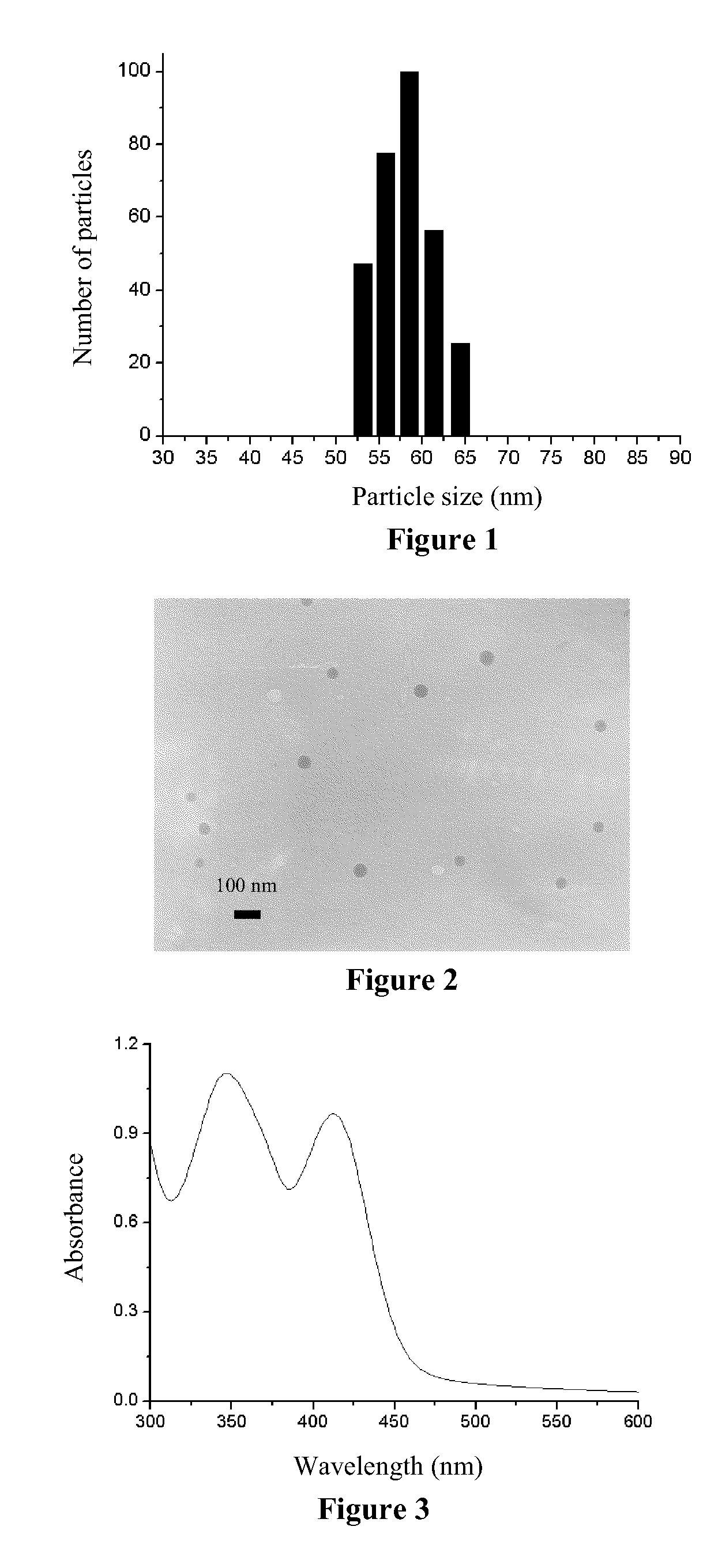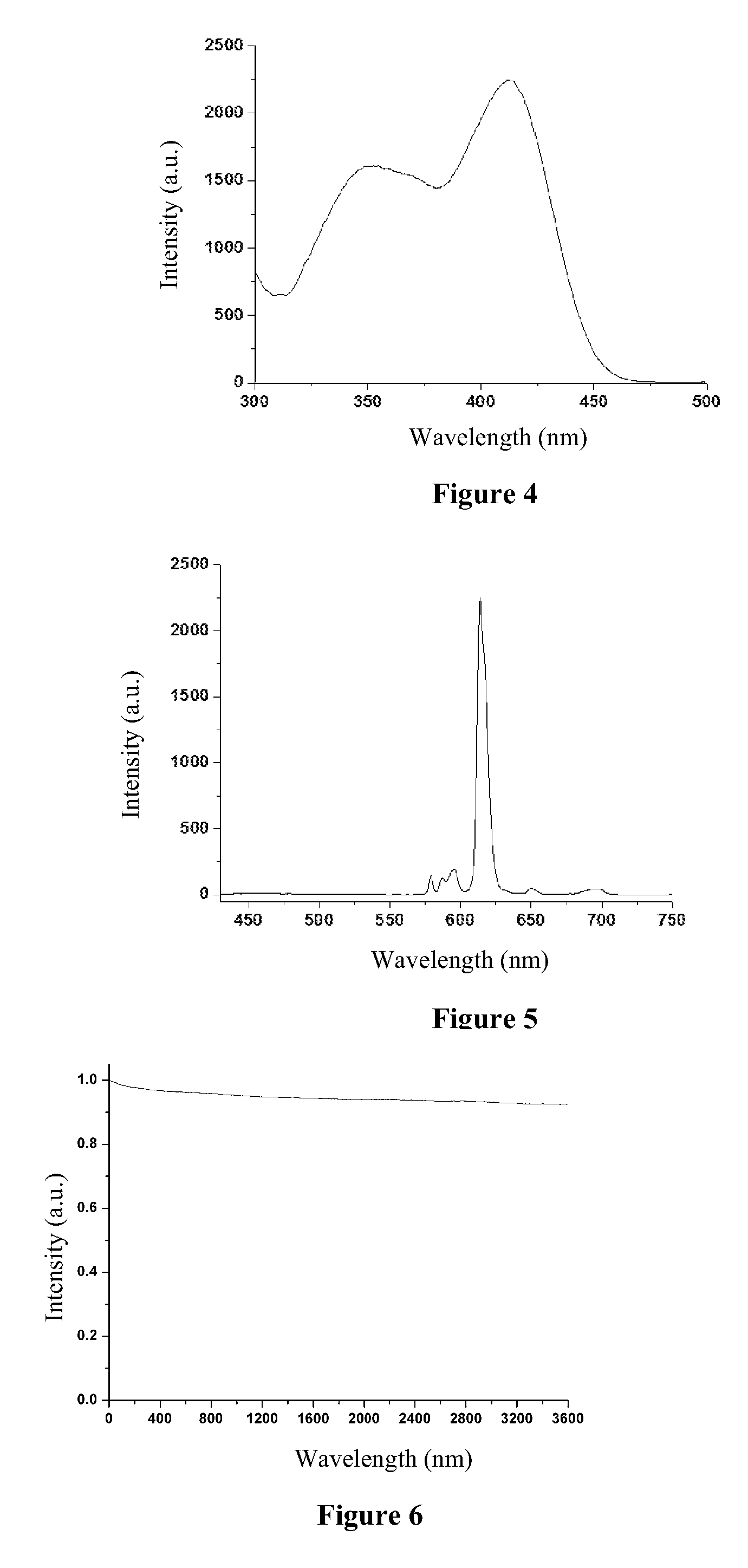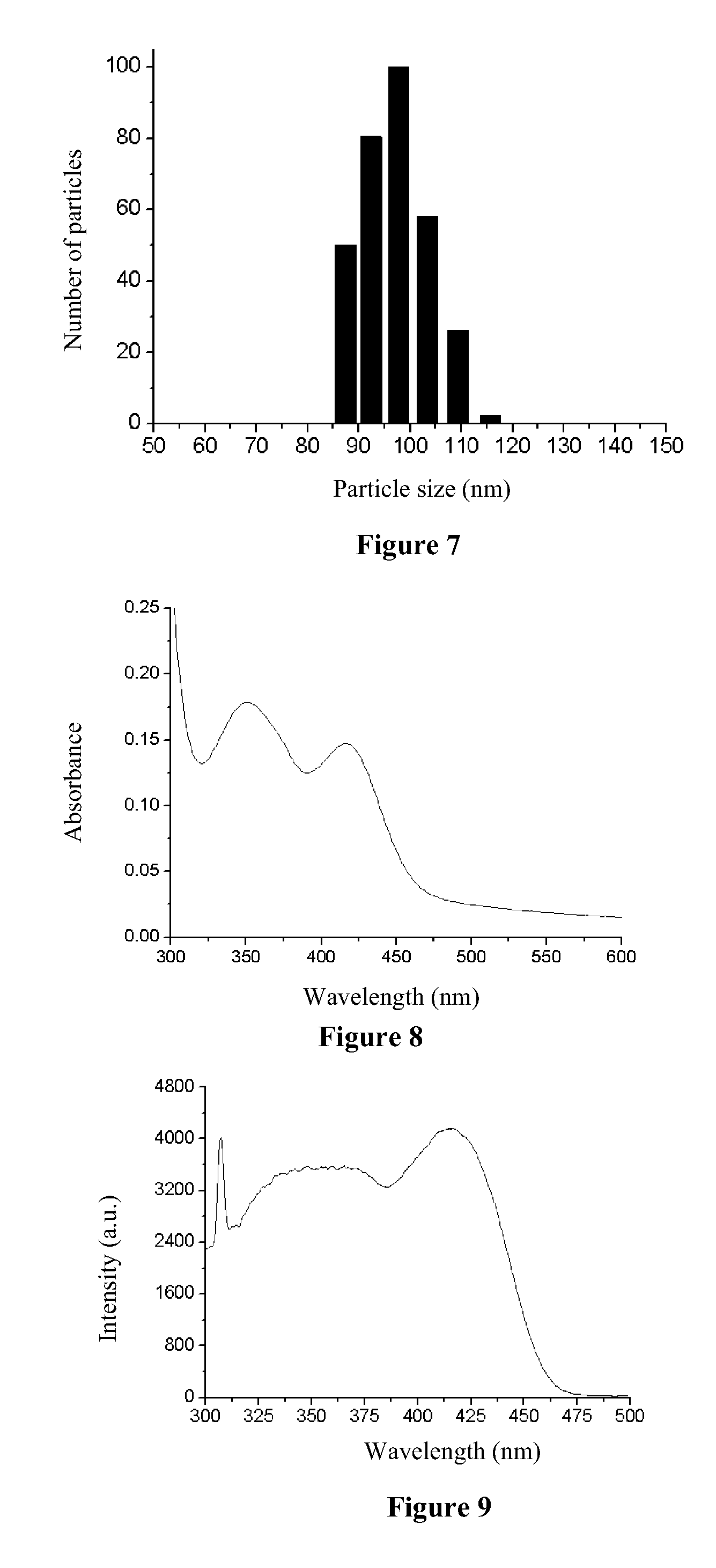Photoluminescent nanoparticle, preparation, and application thereof
a technology of photoluminescent nanoparticles and lanthanide complexes, which is applied in the direction of fluorescence/phosphorescence, instruments, and organic compounds of the group 3/13 element, can solve the problems of limited application of ultraviolet excitation luminescent probes, limited luminescent properties of lanthanide complexes that have excellent luminescent properties under visible-light and near-infrared light, and achieve excellent photoluminescent properties
- Summary
- Abstract
- Description
- Claims
- Application Information
AI Technical Summary
Benefits of technology
Problems solved by technology
Method used
Image
Examples
example 1
Preparation of the Eu(tta)3dpbt Based Luminescent Nanoparticles with Methacrylic Acid-Methyl Methacrylate Copolymer as the Matrix Material
[0053]The methacrylic acid-methyl methacrylate copolymer (number average molecular weight, 50,000, mass fraction of the carboxyl group, 1.0%) and Eu(tta)3dpbt (having a structure as represented by formula VII) were dissolved in acetone so as to prepare an acetone solution, wherein the concentration of the acrylic acid-methyl methacrylate copolymer was 1 g / L and the concentration of Eu(tta)3dpbt was 0.1 g / L. 20 mL of the aforementioned solution was dropped into 80 mL water under agitation, and a mixture was obtained after a continuous agitation for additional 10 min. The mixture was evaporated at 30° C. to remove acetone, and isolated by centrifugation at a centrifugal speed of 25000 rpm (50000 G). The resulting precipitate was re-dispersed into pure water to prepare a sol of the luminescent nanoparticles containing carboxyl groups on their surface...
example 2
Preparation of the Eu(tta)3dpbt Based Luminescent Nanoparticles with Styrene-Methacrylic Acid Copolymer as the Matrix
[0057]Eu(tta)3dpbt based luminescent nanoparticles with styrene-methacrylic acid copolymer as the matrix were prepared according to the same method as that in Example 1 with the exceptions that the copolymer in Example 1 was replaced with styrene-methacrylic acid copolymer (number average molecular weight, 100,000, mass fraction of the styrene group: 40%, mass fraction of the carboxyl group: 25%), which had a concentration of 10 g / L, and the centrifugal speed was changed to 4000 rpm. As shown in FIG. 7, the dynamic light scattering measurement result indicates that the luminescent nanoparticles as prepared have an average particle size of 100 nm, and a particle size distribution ranging from 85 to 115 nm. FIG. 8 shows the ultraviolet-visible absorption spectrum of the sol of the luminescent nanoparticle as prepared, as can be seen from this figure, the luminescent nan...
example 3
Preparation of the Eu(nta)3 bpt Based Luminescent Nanoparticles with Methacrylic Acid-Methyl Methacrylate Copolymer as the Matrix
[0058]The methacrylic acid-methyl methacrylate copolymer (number average molecular weight: 5,000, mass fraction of the carboxyl group: 10%) and Eu(nta)3 bpt (having a structure as represented by formula VIII, see Example 18 for the preparation method thereof) were dissolved in methanol to produce a methanol solution, wherein the concentration of the methacrylic acid-methyl methacrylate copolymer was 0.02 g / L, and the concentration of Eu(tta)3 bpt was 2×10−3 g / L. 25 mL of the aforementioned solution was dropped into 75 mL water under agitation, and a mixture was obtained after a continuous agitation for additional 10 min. Methanol was removed from this mixture by vacuum-rotary evaporation at 4° C. After isolation by centrifugation, the resulting precipitate was re-dispersed into pure water to prepare a sol of the luminescent nanoparticles containing carboxy...
PUM
 Login to View More
Login to View More Abstract
Description
Claims
Application Information
 Login to View More
Login to View More - R&D
- Intellectual Property
- Life Sciences
- Materials
- Tech Scout
- Unparalleled Data Quality
- Higher Quality Content
- 60% Fewer Hallucinations
Browse by: Latest US Patents, China's latest patents, Technical Efficacy Thesaurus, Application Domain, Technology Topic, Popular Technical Reports.
© 2025 PatSnap. All rights reserved.Legal|Privacy policy|Modern Slavery Act Transparency Statement|Sitemap|About US| Contact US: help@patsnap.com



